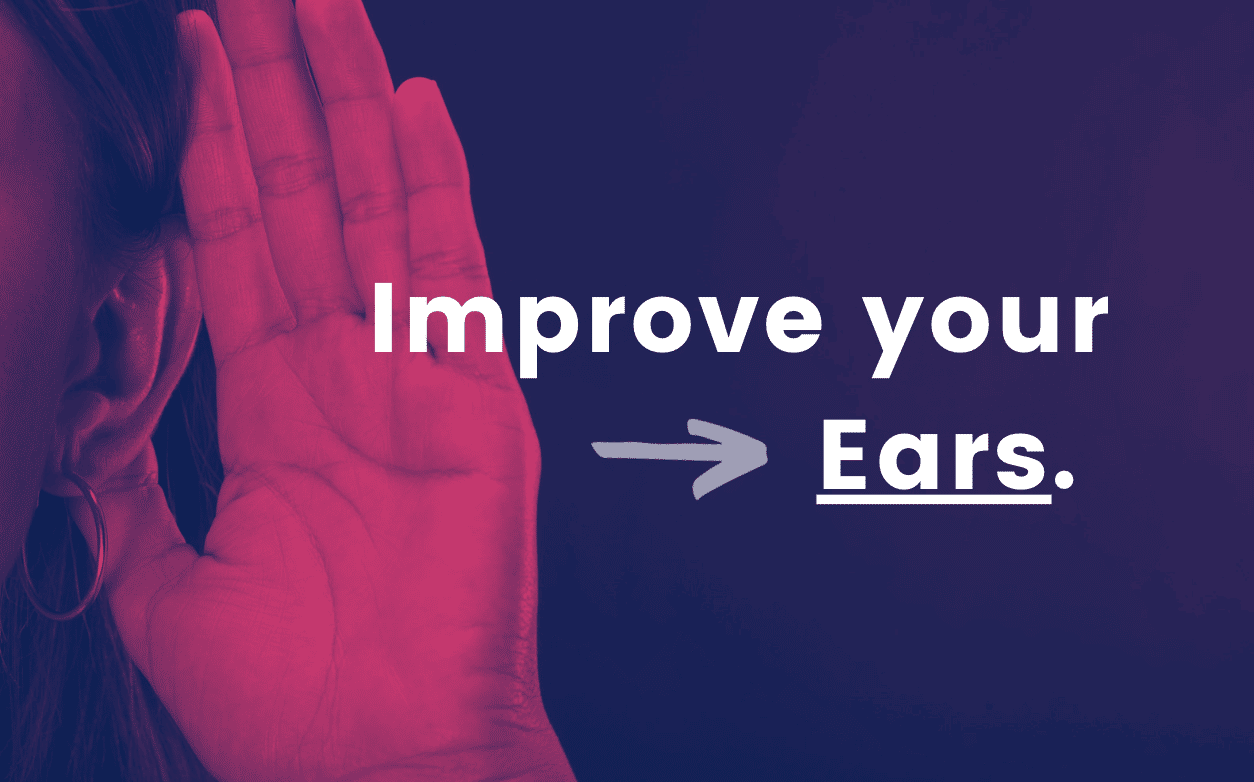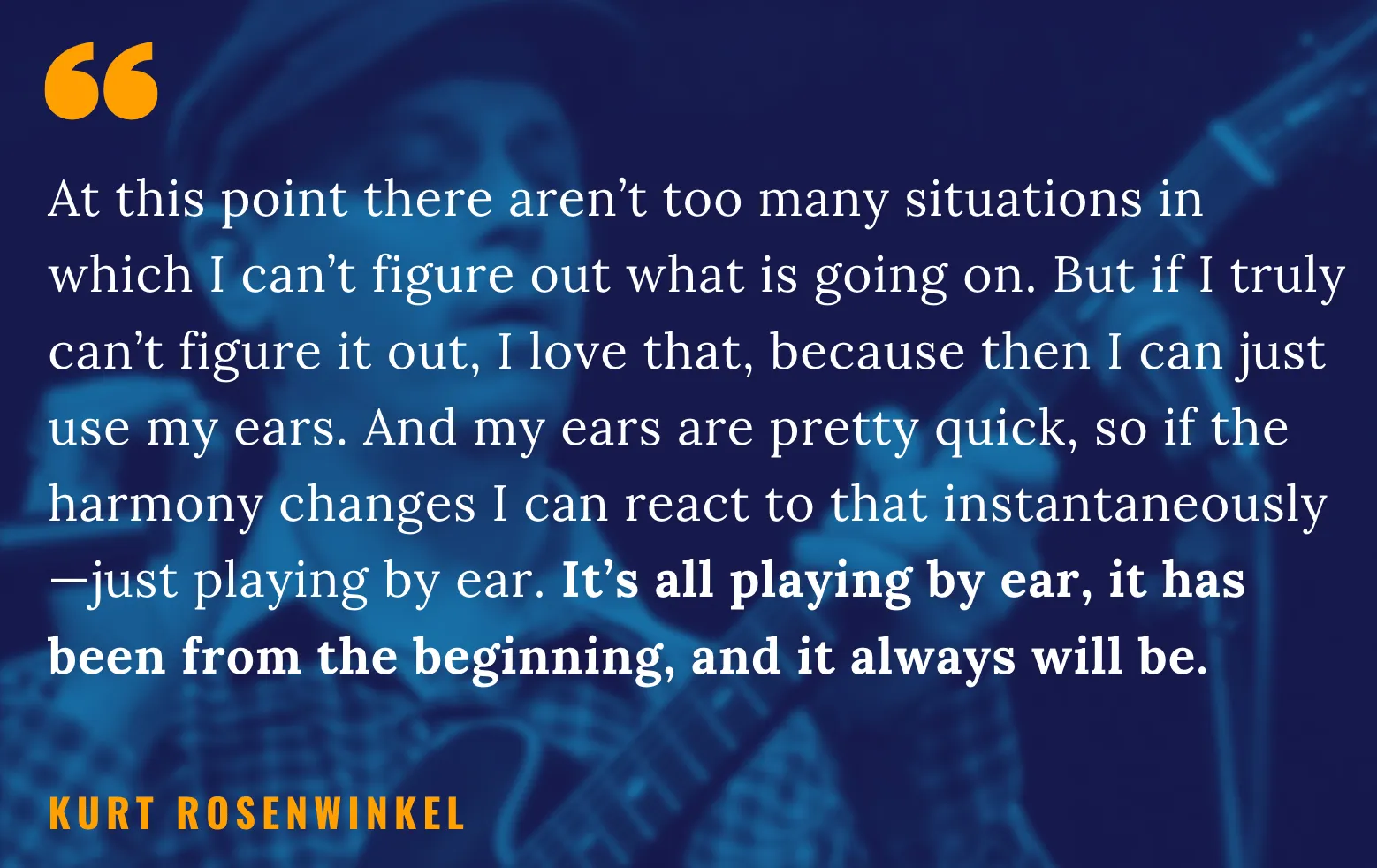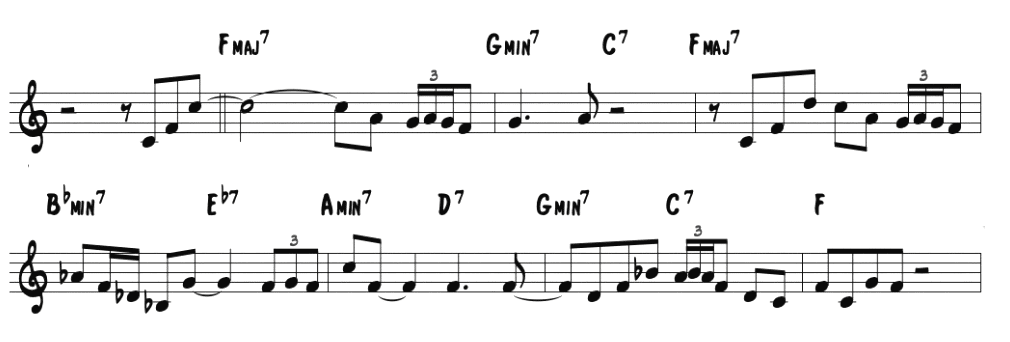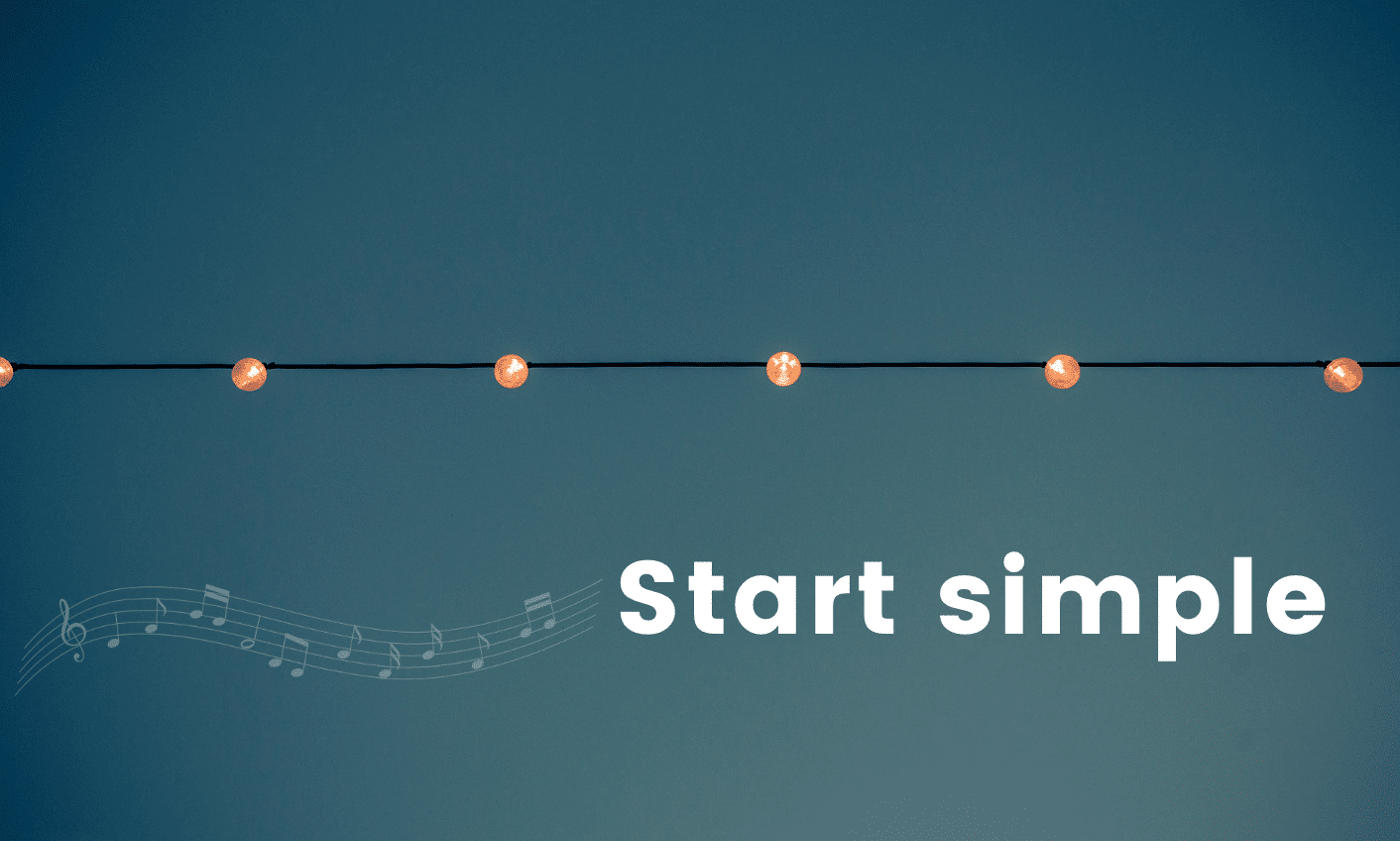You dream of becoming the type of player that can improvise with ease over any tune. A musician with an endless supply of creative ideas to play at a moment’s notice…
But right now you’re struggling to create compelling ideas over the jazz repertoire. Maybe you don’t know which notes to choose in your lines or how to develop lines over a particular chord progression.
The big question is this…
How do you become a player that improvises melodic ideas with ease??
How do you transition from scales or a few licks to actually playing your own original ideas? To finally playing melodies that you’re hearing in the moment?
Great melodies and an improved melodic sense don’t just pop-up out of thin air the more you play. It requires some specific skills that you need to develop in the practice room.
Whether you’re playing over a single chord, a Blues, or one of the scores of standards in the jazz repertoire, improvisation at its core comes down to melodic creation.
In this lesson we’ll cover 6 easy ways to build your melodic approach in any solo…
1. Listen to more music

The one thing every aspiring musician could use more of is listening.
However, we’re not talking about simply turning on a record and zoning out …we mean closing your eyes and directing a laser-like focus to the sounds, shapes, and ideas coming from your favorite recordings.
Listening with the intent to absorb the sound and other musical details of the musical masters you want to sound like – this is key to improving every aspect of your musicianship!
The truth is, you aren’t going to improve your musical output if you don’t improve your musical input. Without taking in new information through your ears, you’re not going to have any information to draw from when it’s time to improvise.
And this is precisely where a lot of players hit a wall, struggling to start from scratch with a lead sheet and a few chords and hoping for inspiration to suddenly hit.
To fix this, you need to make focused listening an integral part of your practice routine, regardless of the style of music you play…

You get the idea. Every musical skill starts with planting the seed of a sound in your mind, and over time these sounds will slowly emerge in your solos – both consciously and subconsciously.
When you improvise you are drawing from the sounds that are ingrained in your ear. This goes directly back to what you’ve listened to – the sound, time, language, and phrasing of your favorite players and tunes – an internal library of musical ideas that you absorb over time.
Whatever your musical goals are…from improving your sound to creating more melodic ideas…listening should be the first step on your journey.
Remember, the more melodies and melodic ideas you ingrain through serious listening, the more material you’ll have to draw from when it’s time to create your own solos!
2. Start using your ears

The second step in building your melodic skills lies in improving your relationship to the actual sound of the music.
Specifically, transitioning from a cerebral or theory mindset to an aural approach to improvisation.
No matter how hard you try, you can’t think your way to a great solo that is both musical and in the moment. This is because music is sound…and to connect with it you must use your mind and your ears!
The pathway to intuitive, creative, and melodic playing is through your ears – accessing the sound of the music that is happening both inside and around you.
But how do you build this skill in practice room?
Along with a mental understanding of the building blocks of music, you also need to have an aural understanding of the elements of improvisation…this means ear training.
Specifically, ingraining the unique sounds of:
- Chord qualities
- Chord tones, triads, and arpeggios
- Dominant alterations
- Common chord progressions
- Tunes & the Jazz Repertoire
- Time, Rhythm, and Swing
- and the Jazz Language
The goal is to be able to operate as a musician through the medium of sound, to draw from and improvise with a library of sounds that you have internalized.

The first step is incorporating some ear training exercises into your daily practice routine. A few exercises you might start with are:
- Mastering interval recognition
- Working to connect your ear to your instrument
- and singing the musical ideas you are learning
The goal is to transform basic musical concepts and techniques into sound, slowly ingraining and singing them. This way when you go to improvise, you’ll be drawing from an internal library of ingrained sounds.
*If you’re looking for a step-by-step method for improving your ear that you can practice anywhere, check out The Ear Training Method.
3. Study the jazz repertoire

One of the best tools you have for improving your ability to create improvised melodies on the fly lies in the jazz repertoire…
Specifically, studying the melodies of the many popular jazz standards that improvisers are expected to know.
This is also a great way to accomplish two goals at once – studying the secrets behind effective melodies while at the same time building your repertoire.
When it comes to building your melodic skills, the goal is not just memorizing the notes of a tune, but actually studying why it works! Spending time on one tune and deciphering the exact tactics behind the melodic line.
An effective way to do this is to take one phrase or even 8 bars of a melody and break it down. For example, you might take the opening to Clifford Brown’s Joy Spring:

With any tune that you learn, there are some specific questions you should ask when analyzing the melody:
• (1) How is the melodic line constructed?
What are the basic characteristics of the melody? (Large intervals, small intervals, rhythm, long notes, short notes, etc.)
• (2) How does the melody relate to the harmony?
On an individual chord basis as well as the larger progression and form, how do the melodic notes relate to the underlying chords?
• (3) What is the phrasing structure?
Where do the phrases start and end, how long are the phrases, which measures or chords are connected, where is there forward motion or resolution?
• (4) What is unique about this melody?
What makes the melody itself stand out and what about it is unique in the way that it relates to the underlying harmony?
With these questions you’re getting beyond the information of notes and chords and getting right to the musical details that matter – the concepts and techniques that will improve your own approach to melody!
The next time you learn a tune, rather than simply memorizing the notes, try to extract the melodic tactics at work and transfer them to your own playing.
4. Do your musical homework

A big creative barrier for players struggling to improvise melodically doesn’t have to do with talent or creativity…
It goes back to the practice room – a reflection of the time you’ve spent on some essential and fundamental techniques.
Many times that musicians feel stuck in improvisation it relates to two specific things: instrumental technique and the ability to play in all keys.
Think of it like this, your melodic ideas and creative potential are going to be trapped inside until you master the basic scales, chords, progressions, and language of jazz in all keys.
For example, if someone asks you to play in F# and you hesitate, falter, or simply can’t think of the chord tones or progression, it’s not your inherent creativity or melodic ideas that are stopping you – it’s your ability to play in F# or to think of chords quickly!
The same thing happens with fast tempos or tunes with complex or non-standard progressions like Giant Steps. The musical barrier isn’t playing what you hear, it’s the ability to technically execute ideas in a specific tempo, key, or progression.
The good news is that this can be remedied in the practice room!
Here are some fundamental areas that you should focus on in the practice room:
- Master major scales in all keys
- Understand major harmony & chord function
- Master minor harmony
- Devote time each day to improving your sound, time, and instrumental technique
- Practice with a metronome
- Work on visualization exercises – visualizing chords, chord tones, progressions, & tunes in different keys
As you practice each of these items, ask yourself: How well do I have to know something to allow for creativity or improvisation?
One area that will unlock your ability to navigate jazz standards is by mastering diatonic chord function and the essential elements of jazz harmony that pop up in every tune.
To be able to improvise melodic ideas in the moment you can’t be thinking about note names, fingerings, chords, or a progression. You need to have this information & technique ingrained so you can focus on creativity.
If you do this musical “homework” in the practice room, you’ll set yourself up for success on the bandstand!
5. Transcribe Melodic ideas

Transcribing is the most direct way to learn the jazz language and in turn, one of the best ways to improve your melodic sense…
It is essentially the practice of absorbing melodic phrases directly from the masters of this music.
To learn how to improvise melodically, you need to understand how the best players navigate the building blocks of music in a melodic way.
Melody isn’t just notes and chords and theory rules, it’s an art form and a tradition, a language that you learn that is passed down from generation to generation.
Your job is to start learning this language in the practice room…
Rather than beginning with entire complex solos, it will be much more effective if you transcribe with a specific purpose.
The goal is to figure out how the best players create melodic ideas over the basic elements of this music – Major, minor, & V7 chords and common progressions.
To start, aim to transcribe a piece of language for the basic chord types found in the jazz repertoire. You might start with a minor line from Clifford Brown:

Then do the same for Major and V7 chords. Your goal should be to acquire multiple pieces of language for every chord type.
After that, transcribe language for common progressions like I-IV or ii-V-I. For instance you might transcribe a ii-V line from Sonny Rollins:

This transcribed language will become the foundation for your own melodic approach.
For a more detailed breakdown of this process, check out this lesson on Mastering the Jazz Language.
6. Start simple & use limitations

The final roadblock that many players encounter in creating solos is dealing with the mountain of information out there surrounding jazz improvisation.
Scales, chords, pentatonic patterns, chord progressions, alterations, substitutions, long lists of tunes, and various methods of improvisation…
The reason that many of us have trouble playing melodies in our solos is that we are starting in a place that is way too complicated! To remedy this we need to scale things back and start from a much simpler place.
A great way to do this is to isolate individual chords or sounds and practice developing a melodic approach to them. Specifically developing melodic tactics for…
- Major chords
- Minor chords
- V7 chords
- Half- diminished chords
For instance, rather than trying to play Stella By Starlight from start to finish without, isolate one chord or one progression and work on developing melodic ideas over this single sound.
If you have trouble playing over a dominant chord or a ii-V-I, why are you trying to play Rhythm Changes in all keys??
You’ll be much more successful at improvising over chord progressions and tunes if you’ve developed melodic tactics for the fundamental chords you find in every jazz tune!
Remember, the jazz repertoire is built using the same melodic elements over and over again. By mastering one chord type, you are gaining musical tools that you can use over
Use this technique to develop melodic tools for common chord progressions as well:
- ii-V-I
- I-IV
- Turnarounds (I-VI-ii-V)
- V7 of V7
Once you’ve established a melodic concept for each of these musical situations you can build on them. Then, it will be much easier to approach entire tunes in a melodic way!
This is where your focus should be in the practice room if you want to quickly build your melodic skills.
Build Your Melodic Skills
Building melodic skills is essential for any serious improviser…
It’s a process that takes time and consistent practice, but it’s definitely one of the most beneficial things you can do as a musician.
By using these 6 tactics in the practice room you’ll begin to see noticeable results in your ability to not only navigate chord progressions and tunes, but to approach then in a musical way.
And if you want to get to the next level as a melodic improviser, be sure to check out our course Melodic Power!











